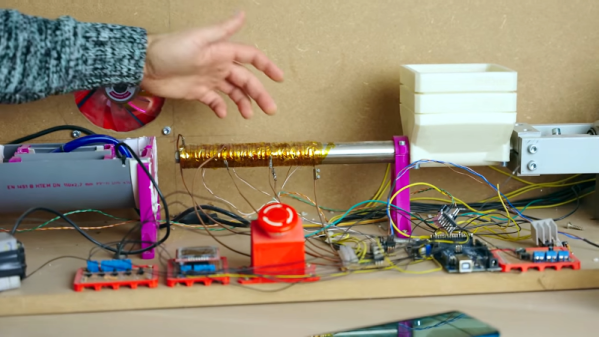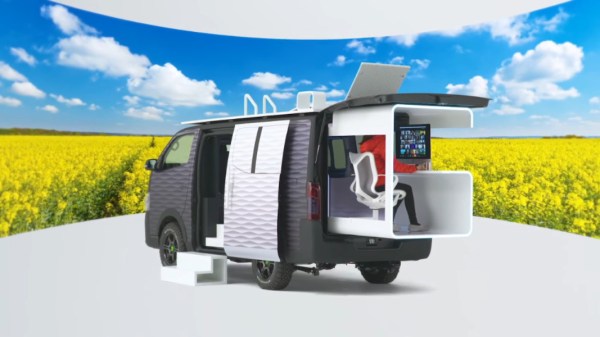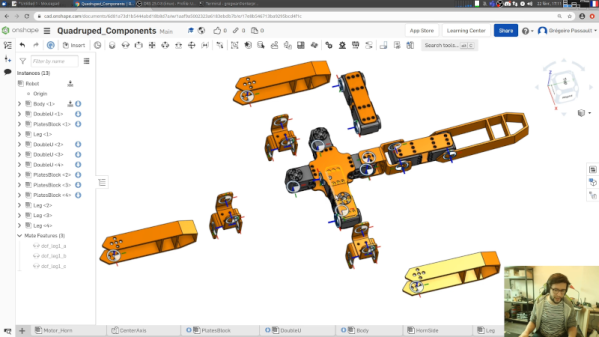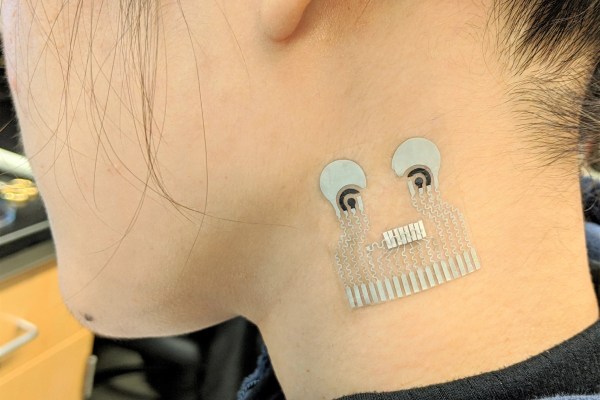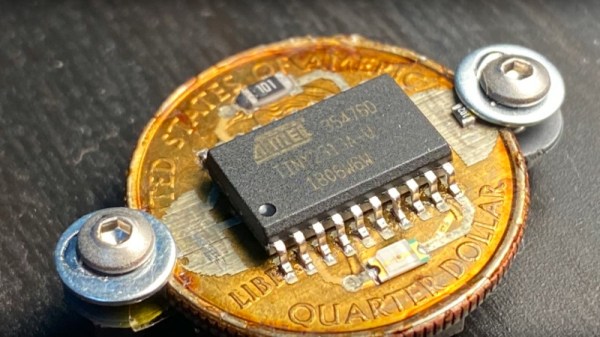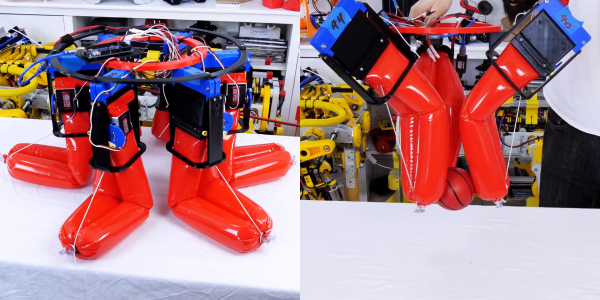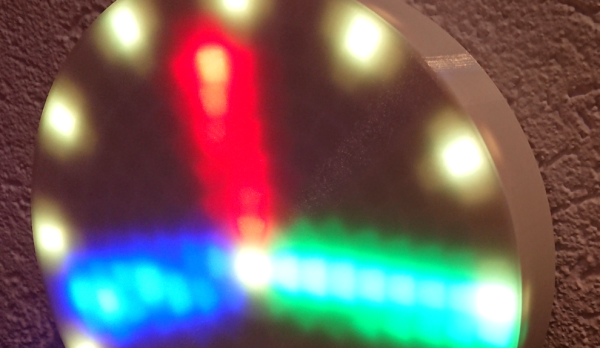All this working from home is pretty great, but we have to admit that we miss packing up the Hackaday office and heading for the local coffeehouse once in a while to spend a few hours writing against the buzzing background. One thing we don’t miss about the experience is that you’re never guaranteed a place to sit and spread out. And unless you trust a friendly stranger to keep an eye on your stuff while you’re in the bathroom, you have to take it with you at the risk of losing your table.
If only we could afford one of Nissan’s mobile office pod concept vehicles. We’ve always wanted to pretend we’re doing surveillance and would probably have the thing wrapped with graphics for a fake flower shop or something. That would certainly make it easier to park somewhere and borrow someone’s open Wi-Fi network — maybe even from the coffeehouse parking lot after we hit the drive-thru.
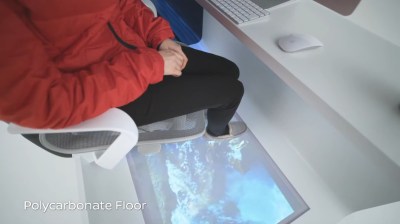 As you’ll see in the extended tour video below, Nissan seem to have thought of everything except restroom facilities. The cab-over-engine design and all-terrain tires would make it easier to drive out into nature and really get away from it all. Once you’ve found the perfect spot, you can open the lift gate for some fresh air, or get some sun while you work by pulling out the motorized unibody-constructed cubicle which includes a built-in Herman Miller Cosm chair. (Evidently the Aeron is old and busted now; we disagree). For some reason, the cubicle is edge-lit, and not in a way that would help you work at the desk. According to the video, it’s based on the Caravan NV350, which looks far more comfortable but not as cool when outfitted as an alternate mobility concept.
As you’ll see in the extended tour video below, Nissan seem to have thought of everything except restroom facilities. The cab-over-engine design and all-terrain tires would make it easier to drive out into nature and really get away from it all. Once you’ve found the perfect spot, you can open the lift gate for some fresh air, or get some sun while you work by pulling out the motorized unibody-constructed cubicle which includes a built-in Herman Miller Cosm chair. (Evidently the Aeron is old and busted now; we disagree). For some reason, the cubicle is edge-lit, and not in a way that would help you work at the desk. According to the video, it’s based on the Caravan NV350, which looks far more comfortable but not as cool when outfitted as an alternate mobility concept.
The office pod has some nice amenities like a DC-AC converter so you can run your Keurig or Nespresso, and there’s even a UV-disinfecting lamp in the glove box. The larger windows behind the cab can be electronically shaded so you don’t bake in the sun. Here’s where things get a bit ridiculous: the floor is made of clear polycarbonate in case you want to park lengthwise over a small stream and watch the surviving fish go by underneath your feet. And if you really want to take a break, climb up to the roof deck and stretch out in the chaise lounge beneath the deck umbrella.
If we lived anywhere but America, we might forego the flower shop graphics wrap and dress it up to look like a TV detector van instead.
Continue reading “Nissan’s Office Pod Concept Is A Productivity Paradise On Wheels” →

